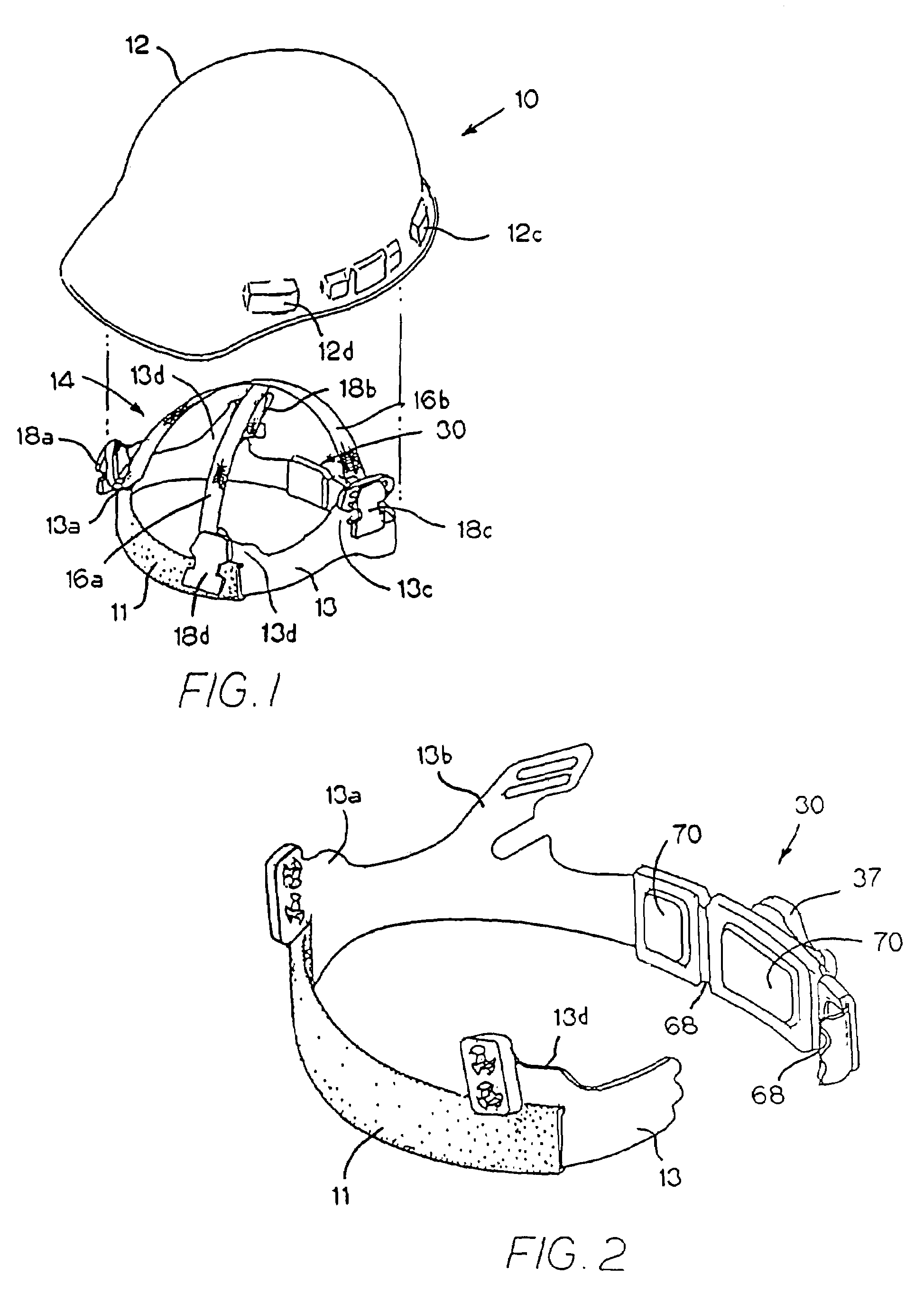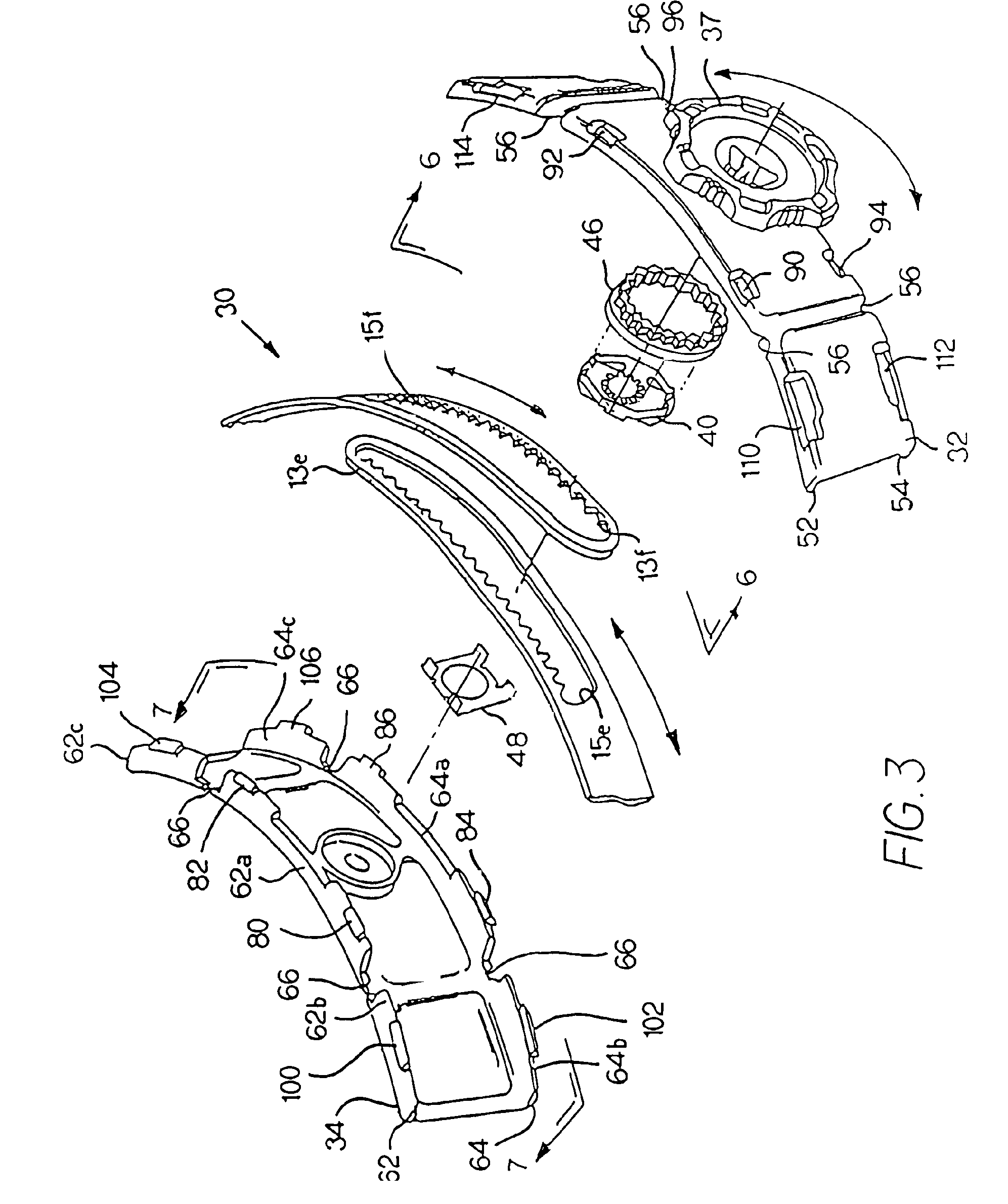Ratchet mechanism for the headband of protective headgear used in high temperature environments
a ratchet mechanism and high temperature technology, applied in the direction of snap fasteners, buckles, protective garments, etc., can solve the problems of inability to perform the ratchet mechanism as intended, the risk of imprecise or flawed operation of the rack and pinion arrangement, and the remaining problem of such ratchet mechanisms
- Summary
- Abstract
- Description
- Claims
- Application Information
AI Technical Summary
Benefits of technology
Problems solved by technology
Method used
Image
Examples
Embodiment Construction
[0036]The present invention is a ratchet mechanism for the headband of a protective helmet or other headgear that is designed to function in high-temperature environments, while still allowing for ready adjustment of the size and fit of the headband.
[0037]FIG. 1 is an exploded perspective view of an exemplary hard hat 10 that includes a ratchet mechanism made in accordance with the present invention. As shown, this hard hat 10 generally includes: a substantially rigid shell 12 shaped to protect the wearer's head, said shell 12 defining a bottom opening and an internal cavity for receiving the wearer's head; a headband 13 with an absorbent brow pad 11; and a suspension 14. In this exemplary embodiment, the hard hat 10 has a 4-point suspension 14 comprising two intersecting straps 16a, 16b. A key 18a, 18b, 18c, 18d is secured to each end of each of the straps 16a, 16b. Thus, to secure the suspension 14 to the shell 12 of the hard hat 10, the shell 12 includes four key sockets spaced a...
PUM
 Login to View More
Login to View More Abstract
Description
Claims
Application Information
 Login to View More
Login to View More - R&D
- Intellectual Property
- Life Sciences
- Materials
- Tech Scout
- Unparalleled Data Quality
- Higher Quality Content
- 60% Fewer Hallucinations
Browse by: Latest US Patents, China's latest patents, Technical Efficacy Thesaurus, Application Domain, Technology Topic, Popular Technical Reports.
© 2025 PatSnap. All rights reserved.Legal|Privacy policy|Modern Slavery Act Transparency Statement|Sitemap|About US| Contact US: help@patsnap.com



